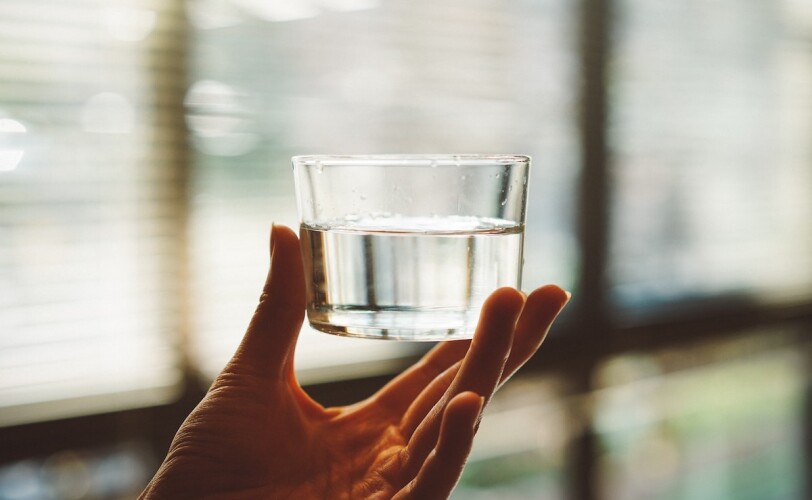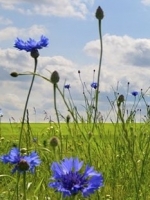Long COVID and histamine
Long COVID: this description is becoming another new label in our day-to-day lives and vocabulary, but what is it really and how can we avoid it or reduce its longevity?

Firstly we must consider that many people live in a high histamine state. This means their immune system and diet are overloading their bodies with histamine. Histamine is an organic nitrogenous compound involved in local immune responses, as well as regulating physiological function in the gut and acting as a neurotransmitter for the brain, spinal cord, and uterus.
Histamine is involved in the inflammatory response and has a central role as a mediator of itching. It is actually very important but can get out of sync.
How histamine affects the immune system
- The current state of someone’s immune system can affect the longevity of their illness. We may describe ourselves as healthy, having a good diet, exercising, supplementing, but what we can’t see is the immune system's responses and how it is activating.
- We have two types of immunity, ‘innate immune system’ which is what we are born with, and 'adaptive immune system' which we acquire from our environment and exposure to specific invaders. Histamine regulates the adaptive immune system. It is thought that the reason children have a higher carrier than adults’ rate but may not show symptoms is because their adaptive immune system is more efficient and alert. In other words, their immune system is quicker to respond and adapt to a new virus.
- If an individual already has histamine intolerance and/or a diet high in histamine they are more likely to experience inflammatory conditions, an ageing immune system creates a greater risk of infection.
- Histamine is considered a potent antagonist of lung tissue inflammation. Therefore, if it is activated it could cause lung difficulties, which is what was seen during the first phase of the pandemic.
A diet low in histamine can reduce the potential for inflammation and therefore protect against infection and it’s longevity.
Histamine - lows and highs
It is important to eat foods that are low in histamine and please always remember that there is no such thing as a 'histamine-free diet'!
Here are some general pointers:
- Avoid or reduce eating canned foods and ready meals.
- Avoid or reduce eating ripened and fermented foods (older cheeses, alcoholic drinks, products containing yeast, stale fish).
- Histamine levels in foods vary depending on how ripe, matured or hygienic the foods. As much as it is possible, only buy and eat fresh products.
- Don't allow foods to linger outside the refrigerator - especially meat products.
- Ensure that your food preparation area (kitchen) is always kept clean - but don't be manic.
- Everyone has their own threshold; you will need to find yours.
Low histamine level foods
- fresh meat (cooked, frozen or fresh)
- freshly caught fish
- chicken (skinned and fresh)
- egg yolk
- fresh fruits - except for strawberries, most fresh fruits are considered to have a low histamine level (also see histamine liberators below). However, I do not recommend eating huge quantities of fruit as the sugars act as a stimulant, raising adrenaline levels and stealthily increases histamine as a consequence.
- fresh vegetables - except for tomatoes
- grains - rice noodles, yeast-free rye bread, rice crispbread, oats, puffed rice crackers, millet flour, pasta (spelt and corn-based)
- fresh pasteurised milk and milk products
- milk substitutes - coconut milk, rice milk
- cream cheese, butter (without the histamine generating rancidity)
- most cooking oils - check suitability before use
- most leafy herbs - check suitability before use
- most non-citric fruit juices
- herbal teas - except for those listed below
High histamine level foods
- alcohol
- pickled or canned foods - sauerkrauts
- matured cheeses
- smoked meat products - salami, ham, sausages
- shellfish
- beans and pulses - chickpeas, soybeans, peanuts
- nuts - walnuts, cashews
- chocolates and other cocoa-based products
- vinegar
- ready meals
- salty snacks, sweets with preservatives and artificial colourings
Histamine liberators
These are foods that help to release histamine from other foods.
- most citric fruits - kiwi, lemon, lime, pineapple, plums
- cocoa and chocolate
- nuts
- papaya
- beans and pulses
- tomatoes
- wheat germ
- additives - benzoate, sulphites, nitrites, glutamate, food dyes
Diamine Oxidase (DAO) blockers:
DAO is an enzyme that helps to break down excess histamine in the body.
- alcohol
- black tea
- energy drinks
- green tea
- mate tea
Debatable
- Yoghurt - depends on the bacteria culture used.
- Egg white - it is a histamine liberator only when in its raw state.
- Yeast - even though it does not contain histamine as such, yeast serves as a catalyst for histamine generation during manufacture. There is no yeast in the end product.
Low-histamine diet
A diet low in histamine can reduce the potential for inflammation and therefore protect against infection and its longevity. Seeking advice from a health care professional such as a nutritionist can provide the correct guidance to safely adjust your diet and improve your overall immune health and health future.
Individuals who are recovering from infection could consider making dietary changes to improve their recovery and long-term health.
The slow recovery rates of COVID have gradually become apparent as people's experiences are being reported. The fatigue and joint symptoms, amongst others, can be associated with inflammatory processes. The body needs energy to recover, and if it is continually fighting against imbalances in the diet it will need greater energy resources from the correct sources to help it recover. The forced malaise is an indicator that there is insufficient energy that needs to be addressed.
It is not uncommon for poorly people to reach for quick-hit sugars and easy sources of food, as they are so fatigued they do not have the energy to cook. Unfortunately, this will simply lead to a slower recovery and continued fatigue. If there are existing health conditions that are connected to inflammatory processes, these could also inhibit recovery.
To find out more about how I can support you, get in contact with me via my profile.

Find a nutritionist dealing with Healthy eating
All nutrition professionals are verified






